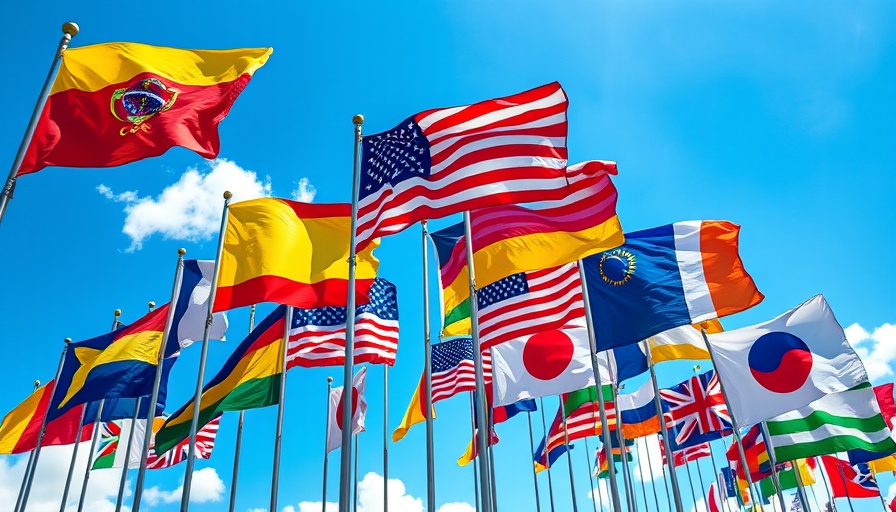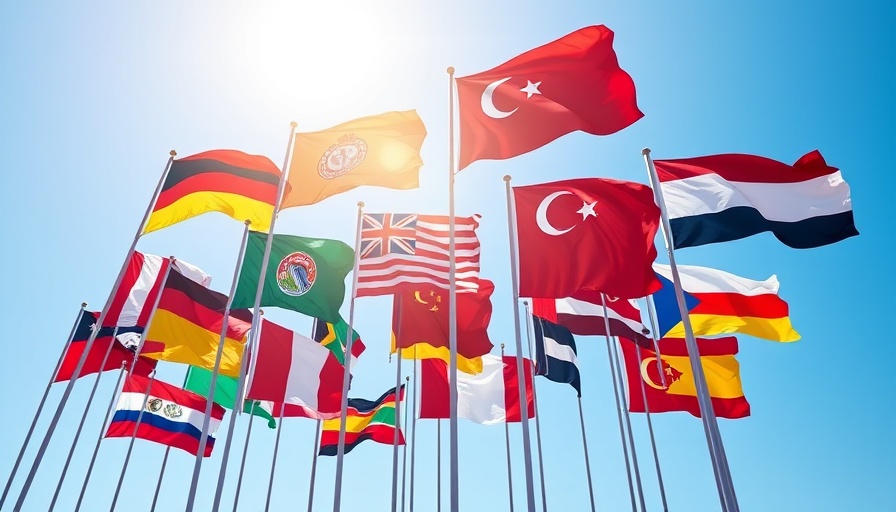
Understanding Global Tariffs and Recent Developments
The world of international trade is ever-changing, particularly when it comes to tariffs that can impact economies on a global scale. Recent news has highlighted pivotal tariff updates by major countries like the U.S., China, India, and members of the European Union among others. As President Trump escalates his tariff strategies, these changes demand our close attention.
Key Milestones in Tariff Discussions
In an effort to fortify his stance on trade negotiations, President Trump has implemented notable tariff adjustments to address what he perceives as inequities in foreign trade barriers. This strategy has sparked varied responses globally, with tariffs swiftly levied against a variety of imports. For example, as of now, both Mexico and China are experiencing a brief 90-day pause on proposed tariff hikes, providing a short window of stability until their next deadlines this fall. This temporary truce means that the existing tariffs, particularly on Chinese goods which previously threatened to skyrocket from 30% to 145%, will remain at their current rate, averting potential economic fallout.
The Impact of Tariffs on Global Economies
In contrast to the pause with China and Mexico, other countries like India and Brazil have recently introduced a hefty 50% tariff on many imports, reflecting their protective measures in response to U.S. tariffs. The European Union and Japan, however, have agreed to lower some tariffs connected to U.S. investments in their industries. These contrasting strategies showcase the fragmented nature of global trade where simultaneous strategies can unveil opportunities along with challenges.
Future Considerations for Trade Professionals
As businesses navigate these turbulent waters, it's crucial for trade professionals to remain updated on evolving tariff regulations. Enhanced cooperation between trade partners could pave the way for a more balanced global market. But with rising tensions and retaliatory tariffs, the potential for trade wars looms large. Companies must prepare rigorously, making informed decisions about their import and export strategies to mitigate risks associated with rapid tariff changes.
Practical Insights for Businesses
Staying ahead of tariff implications requires diligent research and adaptability. Businesses might consider diversifying supply chains to minimize dependency on any one market impacted by fluctuating tariffs. Additionally, engaging in proactive negotiation discussions with foreign partners could enable companies to secure more favorable trade agreements, counteracting the adverse effects of increased tariff costs. The key is to keep communication channels open and embrace strategic planning.
Conclusion: Embracing Change in Global Trade
As the geopolitical landscape continues to evolve, understanding and adapting to global tariff changes will be crucial for businesses aiming for long-term success. Though navigating these developments can feel overwhelming, awareness and strategic foresight will empower companies to thrive in a competitive marketplace. By embracing these insights, businesses can foster resilience against tariff fluctuations.
 Add Row
Add Row  Add
Add 

 Add Row
Add Row  Add
Add 



Write A Comment